
Made in KYOTO/Folding fan as a fashion eye...
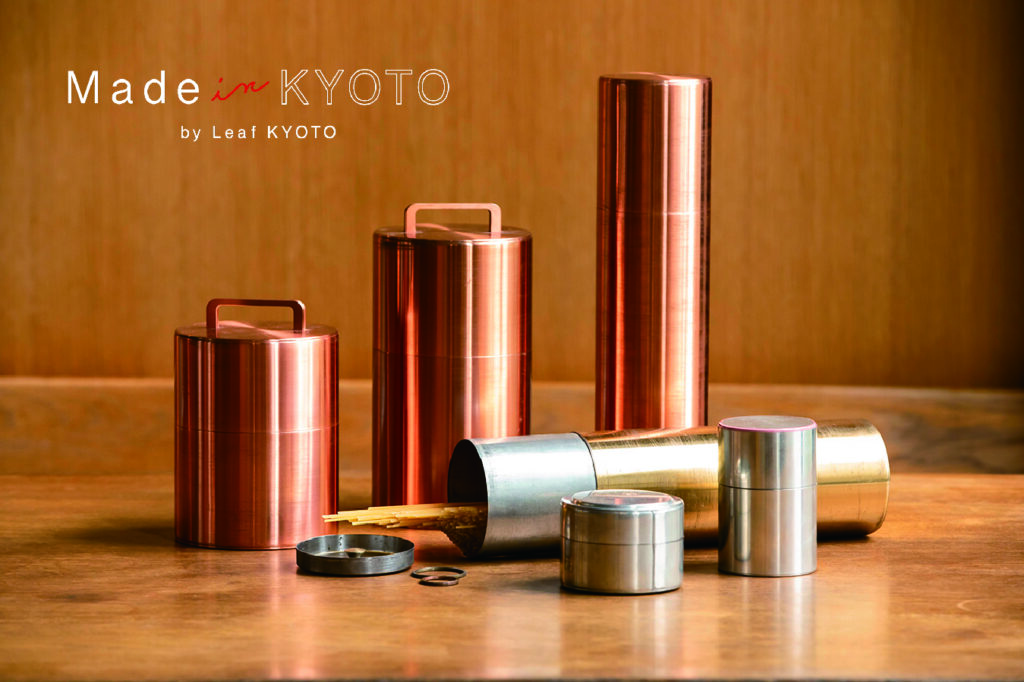

Made in KYOTO" spotlights crafts unique to Kyoto and introduces their appeal and new challenges.
In this issue, we pick up Kaikado (Shimogyo-ku, Kyoto City, Kyoto Prefecture), which has the oldest history as a handmade tea canister manufacturer in Japan and will celebrate its 150th anniversary in 2025. Kaikado's tea caddies, which were created during the Meiji period (1868-1912) and have maintained the traditional handmade technique despite the turbulent times, have now become a globally recognized craft. We will look at the challenges faced by the sixth generation, Takahiro Yagi, who creates new products that match modern lifestyles, and his passion for the craft.
When closing the lid of the tea caddy, the weight of the lid alone will slowly and smoothly lower the lid when the hand is released. When you open the lid, you feel a unique sensation as if you are grasping the air. This indescribably pleasant feeling is proof of the airtightness of Kaikado's tea caddies.


Kaikado's tea canisters are made using a process established by the first generation more than 100 years ago and passed down from craftsman to craftsman. There are more than 130 steps to complete the process, and each one is still done by hand," says Yagi. At the workshop where I was shown around, the craftsmen were working single-mindedly on the production of tea caddies, dividing the workload between them.
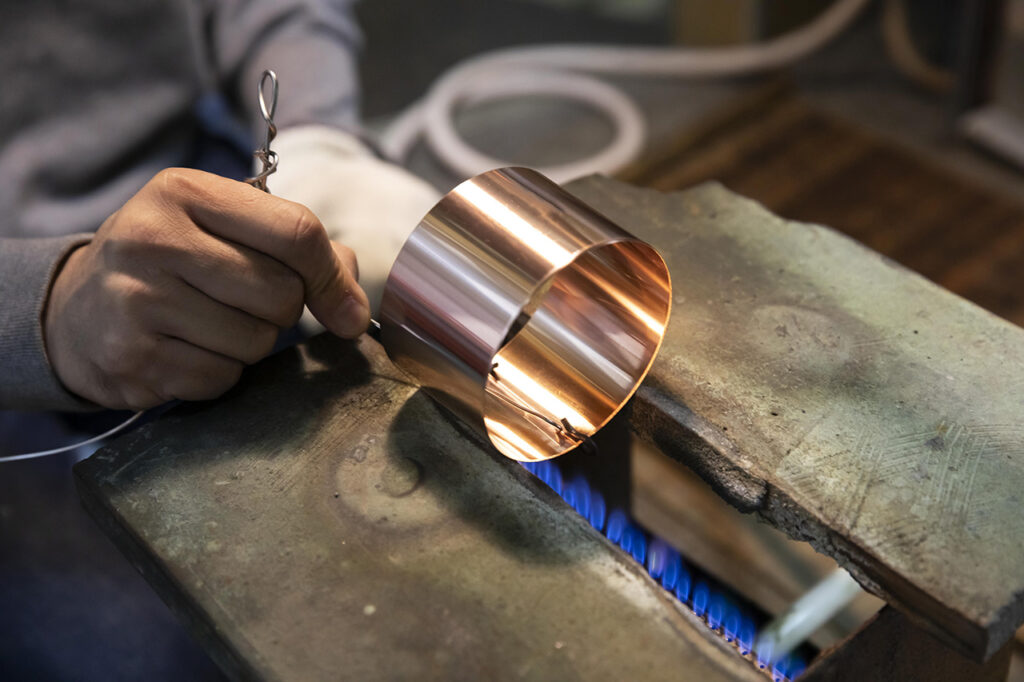

The tea canisters are made of copper, brass, and tinplate. The process begins with cutting the plate to size, rounding it to make a perfect circle, fixing it, and soldering it. Then, the bottom is inserted and the part is soldered, and the main process is to make subtle adjustments while checking the feel repeatedly by hand, then polishing and finishing.
Every process requires precision and delicacy, and requires a high level of skill with experience.
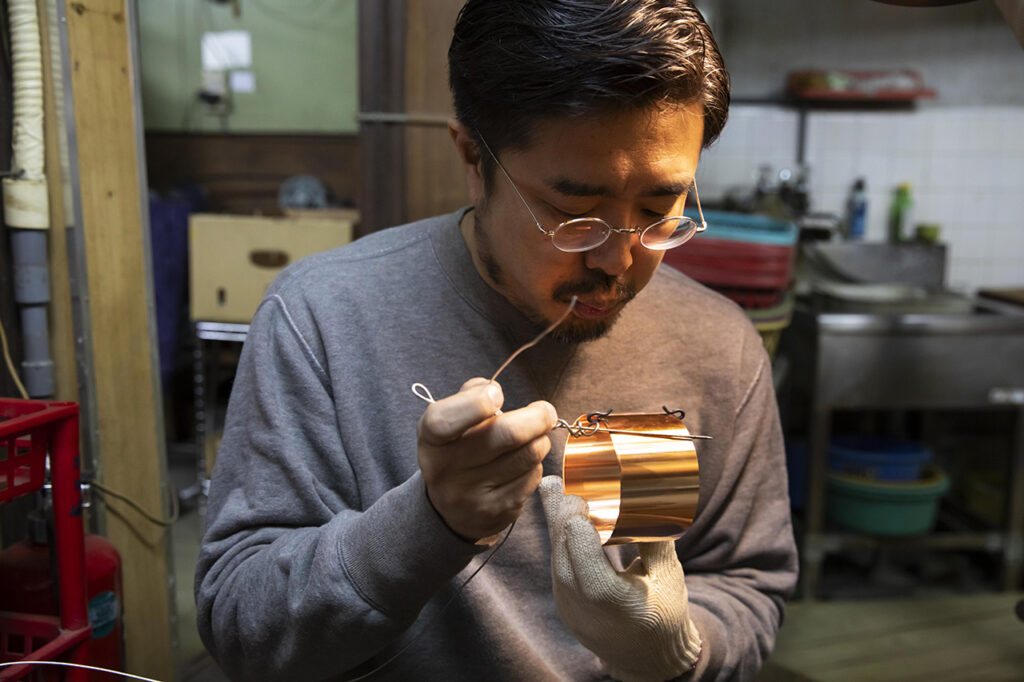
Solvent is applied to the glue joints of the lid and body, and soldering is done by applying heat over a fire. The temperature and time of melting differ depending on the material, so it is a craftsman's skill to find the right moment to do so.

I finish the tea caddy by relying solely on my sense of touch. The most important thing for me is the pleasant feeling when you open the tea caddy. I aim to make it both comfortable and functional so that people will want to put their precious things in it," he says.
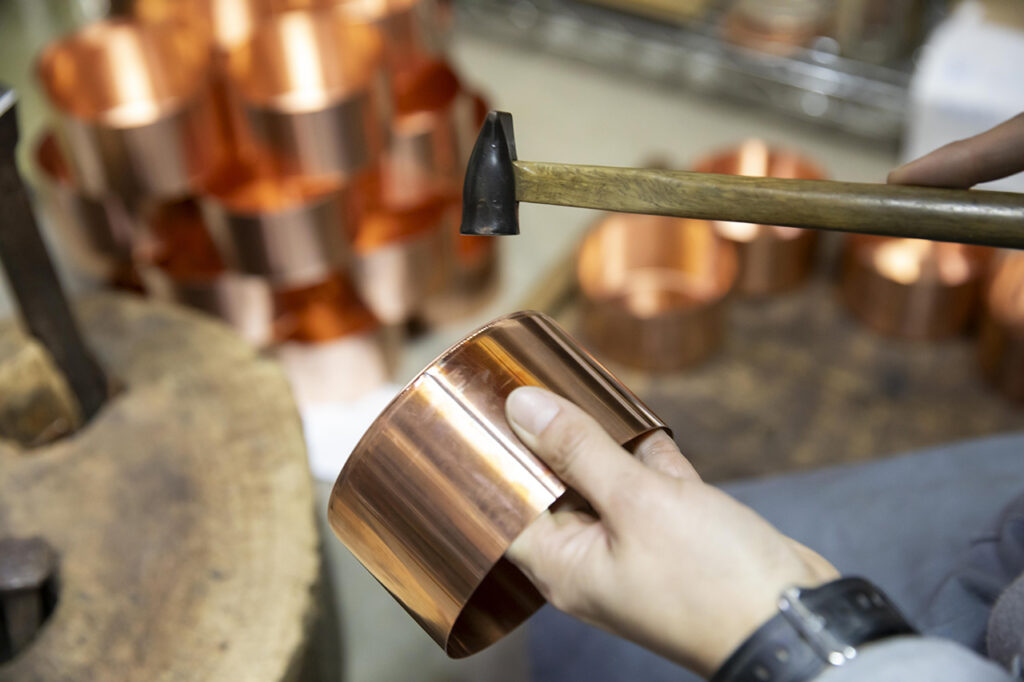
Adjusting the height of the lid after putting the bottom in. Using old tools that have been in use since the company's founding, the process is carried out with all five senses, including sound, look, and feel.

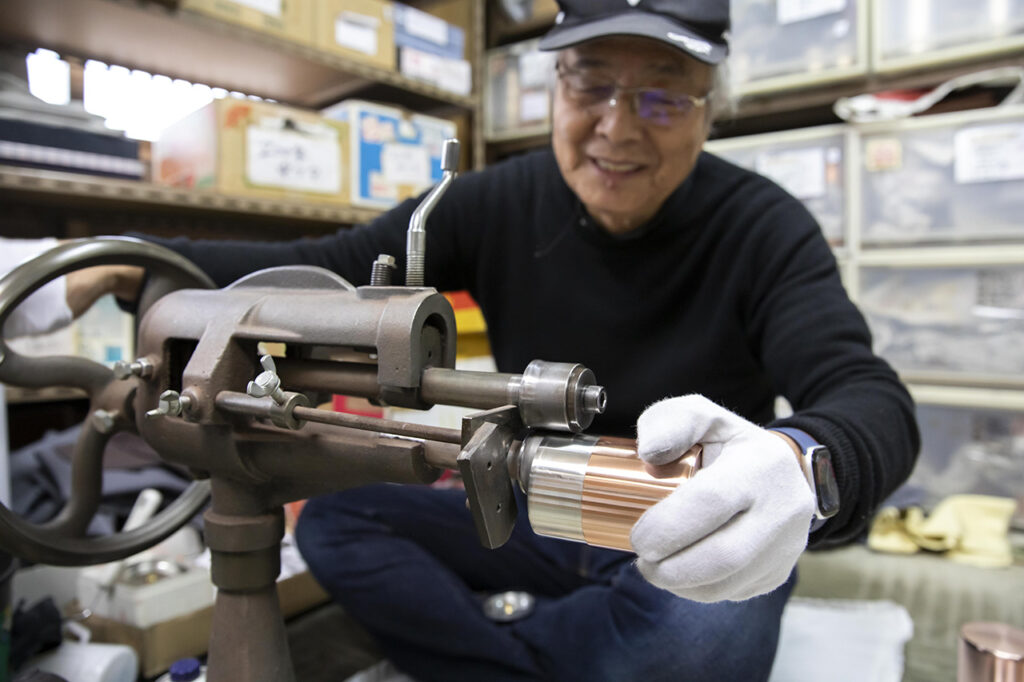

[In addition to their functionality, Kaikado tea caddies are also attractive for their beautiful appearance. The materials used, copper is between red and orange, brass is gold, and tinplate is silver, all have a shiny and dignified impression.
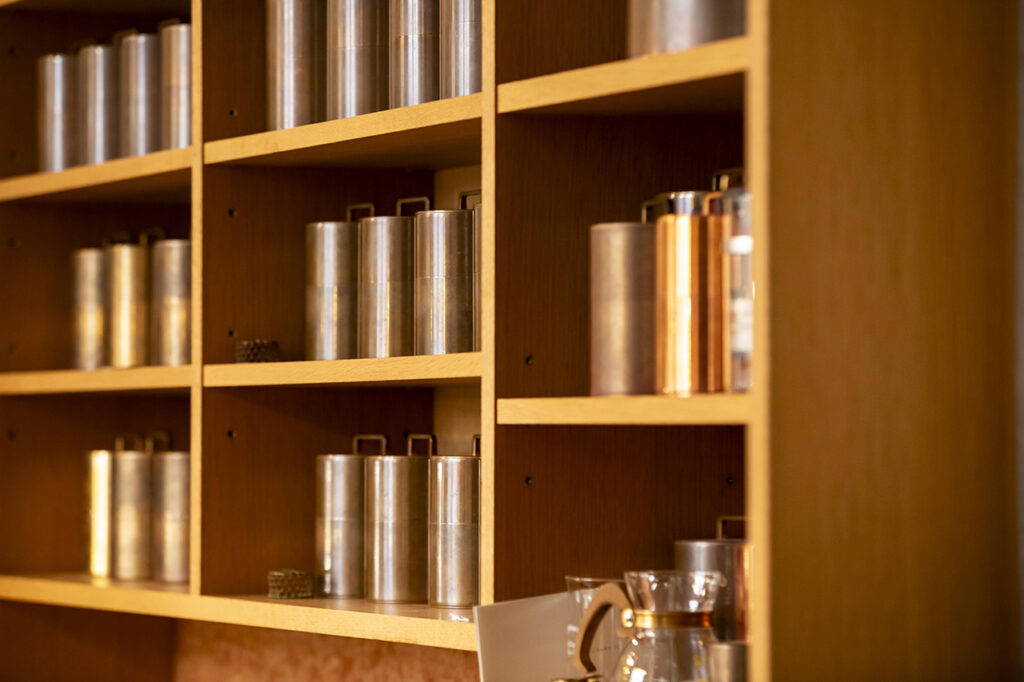

This one is decades old," Yagi said, showing me a tea caddy from the store's display that has changed to a darker shade of brown or black. They change color depending on who uses them and how they are used. For example, people who eat a lot of vegetables and people who eat a lot of meat will have different reactions to the metal because the alkalinity and acidity of the oil and sweat from their hands will change," he said.
[Kaikado's tea caddies also reflect the owner's daily life.


And there is also a secret in the ratio of the height of the lid to the body of the tea caddy. Kaikado's tea caddies actually have a silver/white ratio. The golden ratio is represented by the Venus de Milo, while the silver ratio is the ratio of anime characters that Japanese people are familiar with. Tea caddies are tools that we use every day, so I want them to be familiar rather than perfectly beautiful.
The ratio of silver to silver is approximately 1:1.414 (5:7), also known as the "Yamato ratio," which has been called the "divine ratio" among carpenters in Japan since ancient times.

Many products that are practical in modern life, such as coffee cans and pasta cans

Many products have been created since Mr. Yagi became the sixth generation, such as coffee cans, pasta cans, and nut cans, in response to changing lifestyles. Some of the products are the result of ideas from young craftsmen.
Also, unexpected products such as tea canister speakers developed jointly with Panasonic were born, combining technology passed down from generation to generation and refined beauty with modern products.
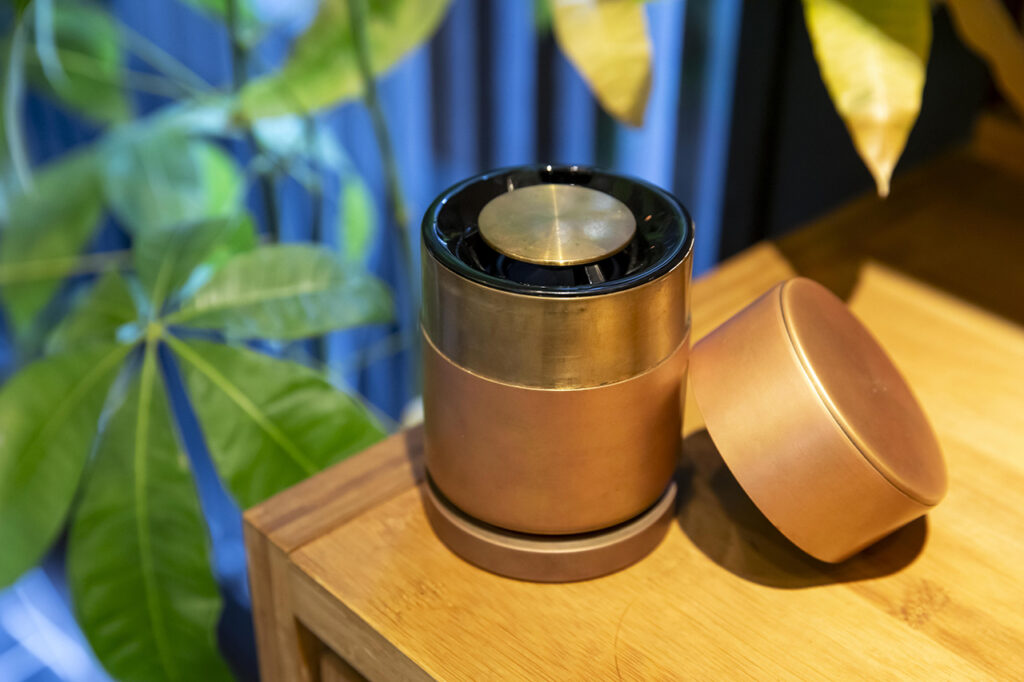
The "Kyotsuzumi" wireless speaker, which was released in 2018 in a limited edition of 100 pieces and sold out immediately, costs 300,000 yen. The system switches on when the lid is opened.

Kaikado tea canisters are now one of Kyoto's representative handicrafts, and a look back at the history of this long-established company founded in 1875 reveals the thoughts of its predecessors who, despite being tossed about by the times, have continued to protect their tea canisters.
Kaikado began by making tea caddies from tinplate imported from England. During the Second World War, we kept the tools amidst a shortage of supplies, and even in the postwar era of mass production by machine, we continued to make them by hand. If they had been mechanized, I don't think they would have been able to continue making them to this day.
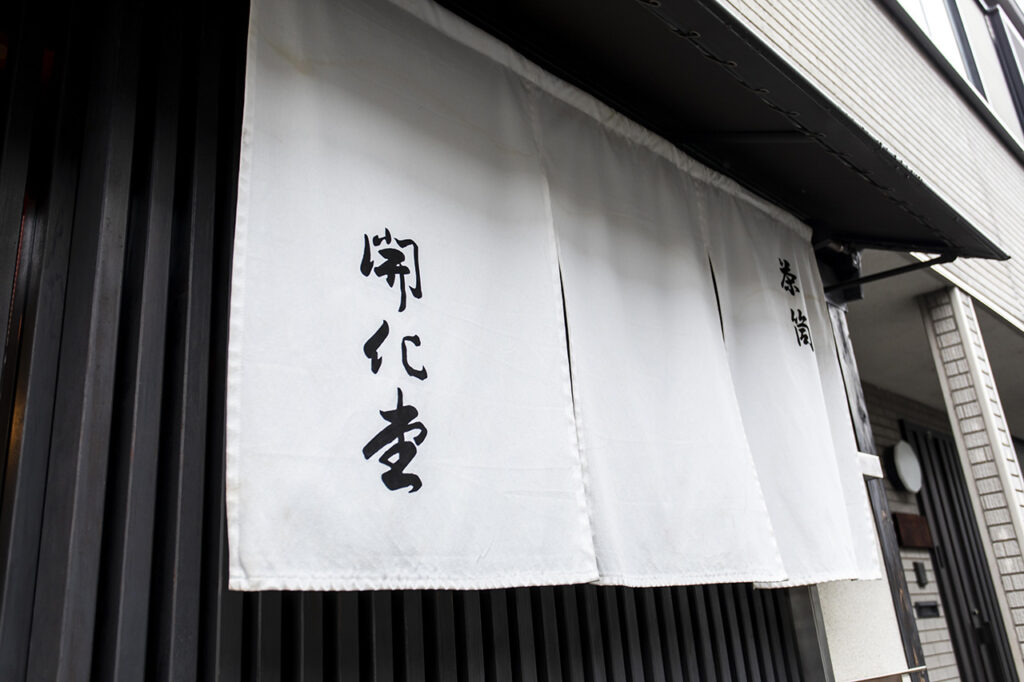

Mr. Yagi says that even from 2000, when he began training under his father, the fifth generation, to the present, he has felt the great change of the times. When I took over, I was told, 'Even if you continue this job, you will not be able to make a living in the future. But I knew that was not true. [I have been working with the goal of making the craftsmen of Kaikado an aspirational profession.


As the sixth generation, Mr. Yagi inherited the skills and passion of the company's founder and turned his attention to overseas markets. He has reexamined his sales methods, which had previously been limited to wholesale only, and opened a store, and he now conducts demonstrations and sales not only in Japan but also in London, Taiwan, Vancouver, and other foreign countries. The number of foreign customers, which was almost zero 20 years ago, now accounts for about 70% of the total. I am happy to see that the attitude toward crafts and craftspeople has changed over the past 20 years, and that their value is increasing.
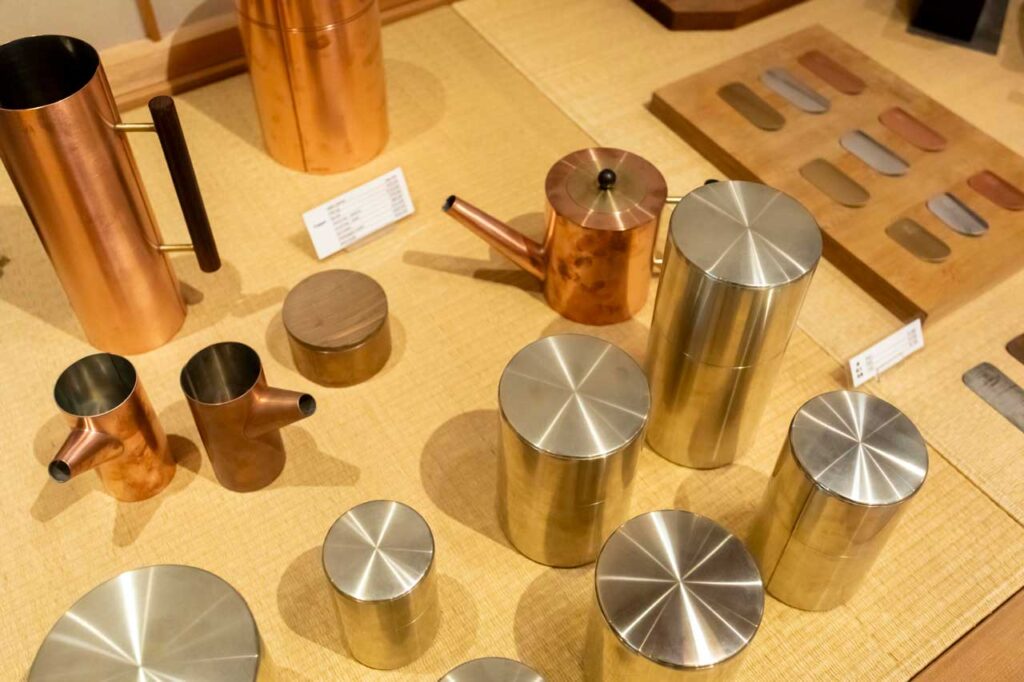

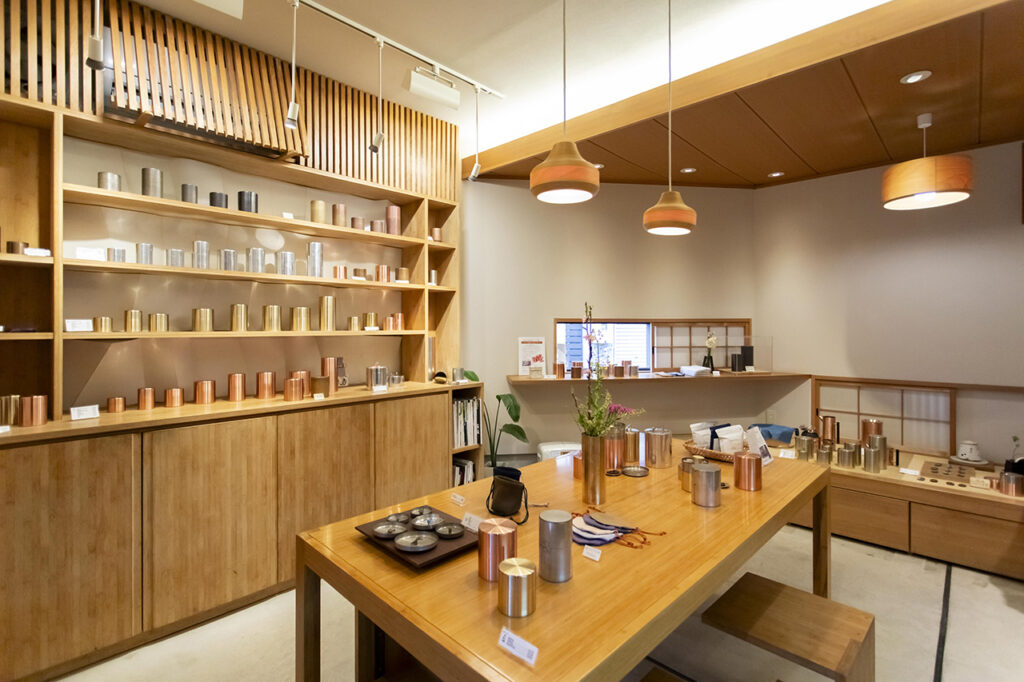

In 2016, we also visited Kaikado Café, which [Kaikado] opened under the concept of "Kaikado's parlor. The café was started by his father, the fifth generation, who said, "I want to open a coffee shop when I retire.
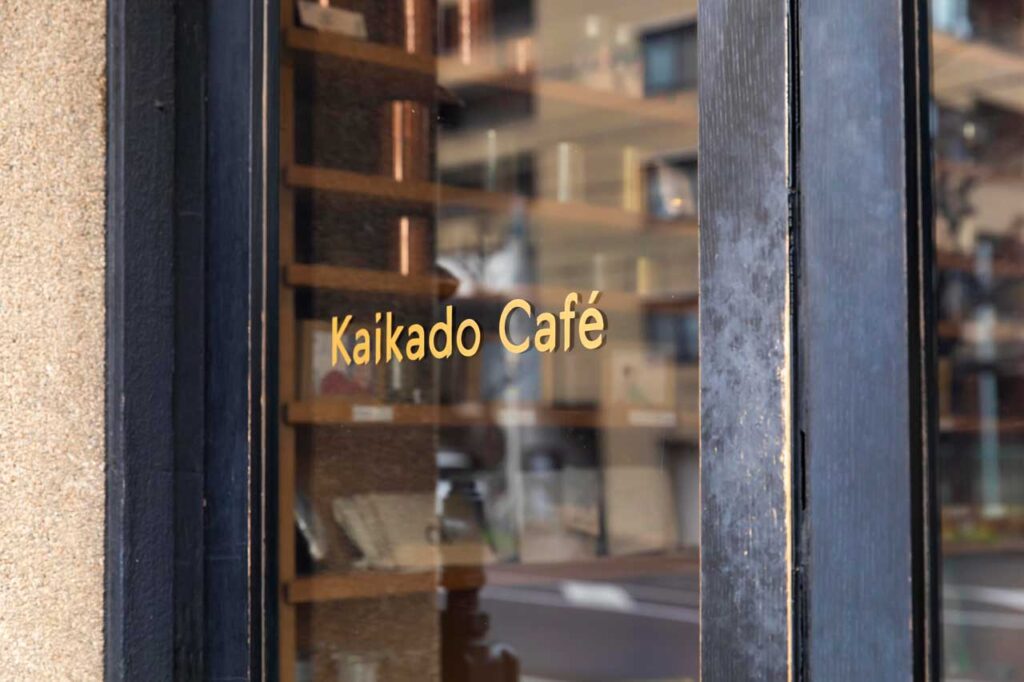

I have always loved this building, which used to be a Kyoto streetcar depot, so I renovated it and turned it into a café," he said. The Western-style building, a cultural asset, has a high ceiling and an open courtyard. The spacious seating area allows for a relaxed atmosphere, and the quiet time flows through the café as if the hustle and bustle of the city is far away.


We want to make this a place where people of all ages, including young people, can experience a variety of crafts. We also sell the Asahi-yaki cups and other handicrafts used in the store, and customers who use them and like them sometimes buy them.
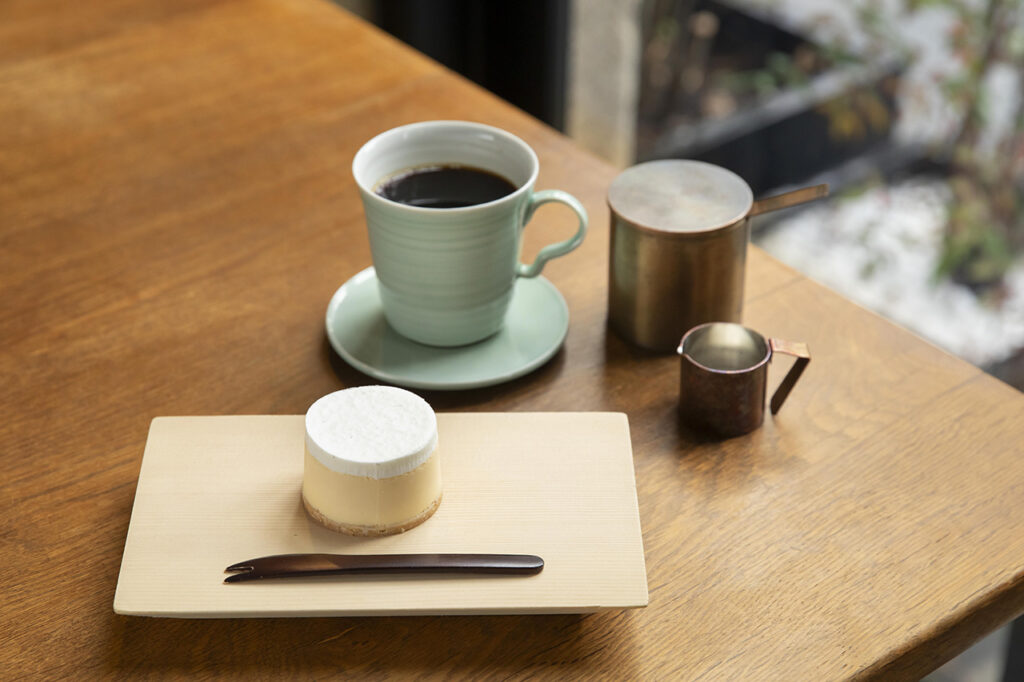
Kaikado Cheesecake Set: 1,950 yen. [Kaikado Roastery's blended coffee has a mild and lingering taste. The original cheesecake is shaped like a tea canister, with the cream part on top resembling a lid.

The menu includes coffee from Kaikado Roastery, which started roasting in 2023, Japanese tea from Marukyu Koyamaen and Rishoen Tea Shop in Kyoto, and black tea from Postcard Teas in London, all of which are highly recommended by Mr. Yagi. Mr. Yagi sincerely recommends all of them.
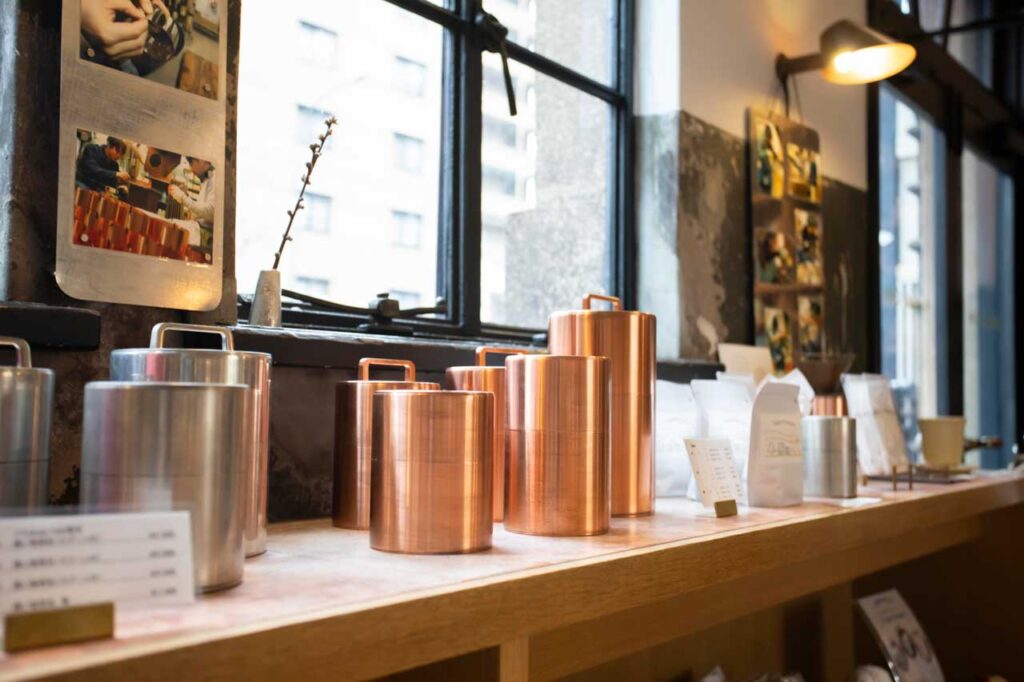

In 2025, Kaikado will celebrate its 150th anniversary. Even though our tea caddies have been produced over the years, they are not "traditional crafts," but rather "handicrafts. I don't like to use the word "traditional" because I feel that it stops there. To borrow a phrase from Ichiro Yamaguchi of Sakanaction, I would say that we are changing without changing.
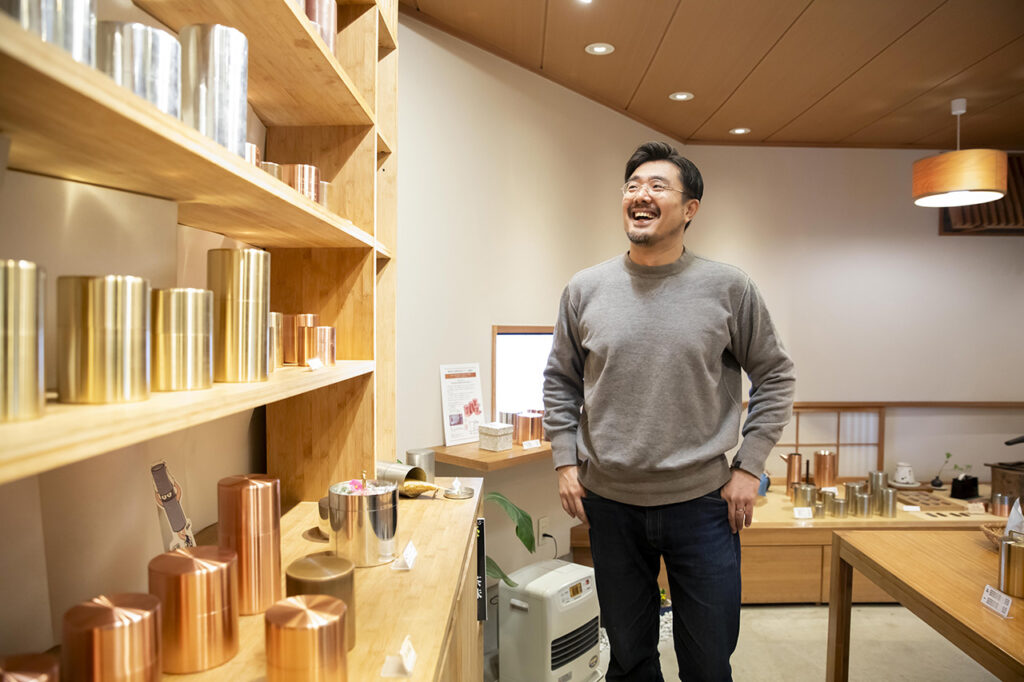

At Mr. Yagi's side was a line of goods featuring the 150th anniversary commemorative character "Blik! The comical and adorable character, designed by Keigo Kamide, the sixth generation artist at the Kutaniyaki pottery Kamide Choemon Kiln, with whom he has a close friendship, gives us hope for further development of this long-established business.
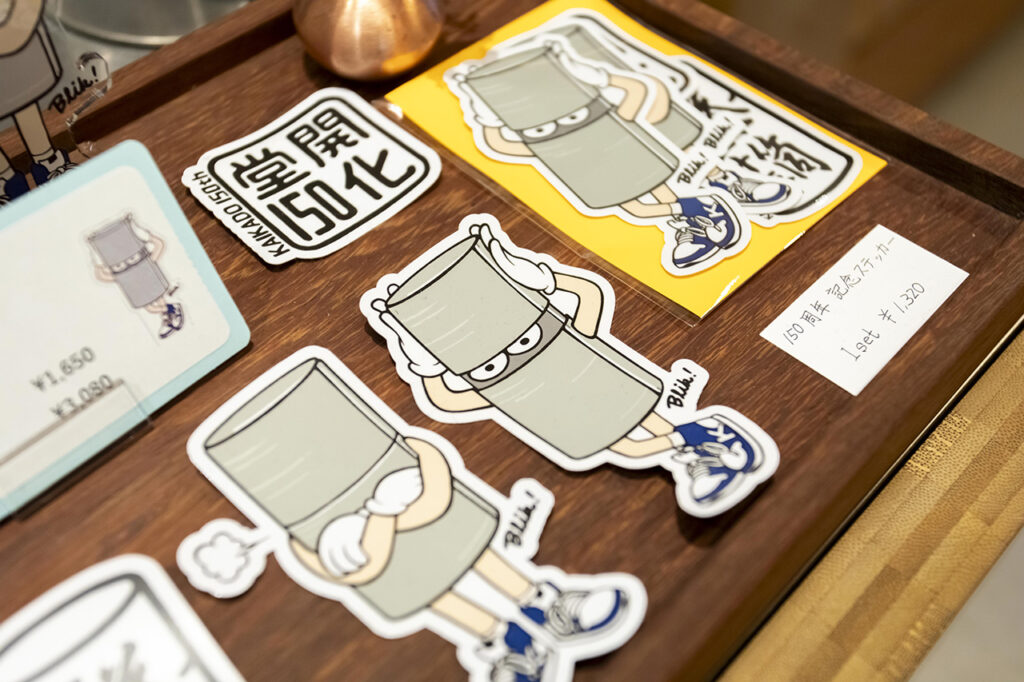

Mr. Yagi is also looking ahead and thinking about something new. I don't know if the materials we use today will be available in the same way 100 years from now," he says. I am beginning to use the techniques of Kaikado to recycle discarded tin cans and other materials to create new works of art.
On the day of our interview, Mr. Yagi had just returned from Bahrain, where he held an exhibition of tea caddies. He is an active world traveler, and as the sixth generation, he is a reliable figure who bears the future of Kaikado.
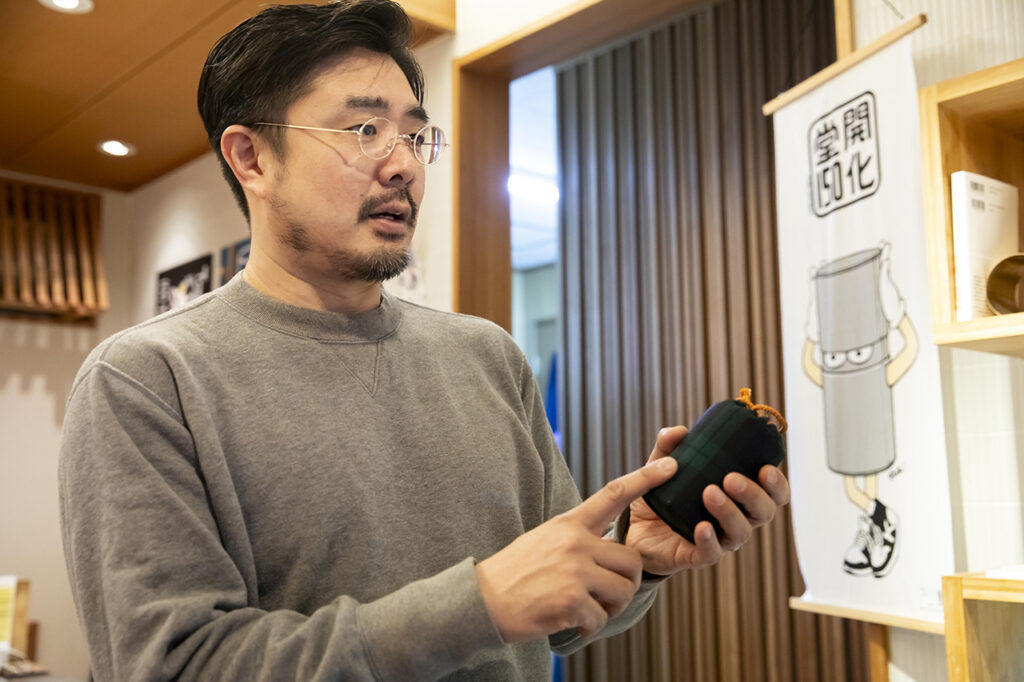
Takahiro Yagi, the sixth generation head of the family.
Born in 1974, he started his apprenticeship at Kaikado in 2000 and became the sixth generation to take over the company. 2012, he formed the creative unit "GO ON" with his successors of the same generation who are responsible for Kyoto's traditional crafts. In 2012, he formed the creative unit "GO ON" with his successors of the same generation who are responsible for Kyoto's traditional crafts.

Over 600 interviews per year! An order site carefully selected by the editors who knows Kyoto and Shiga.
nowOfficial LINE friend registration500 yen OFF coupon is being issued!
Distributed every Friday morning at 8:00 am! From new restaurant information to event information that we want to share with you, We deliver articles about Kyoto that are useful to know. About 20,000 people have registered.Click here to add a friend!
 News
News Feature article
Feature article Featured event
Featured event